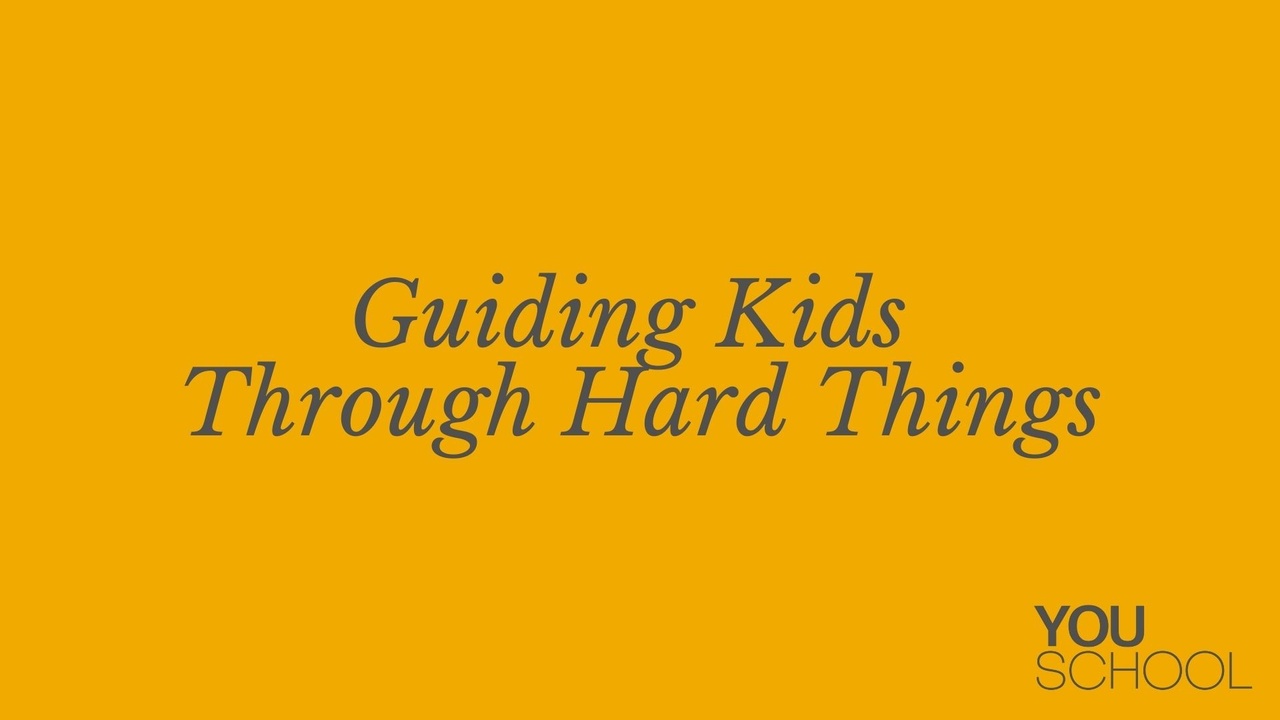Guiding Kids Through Hard Things

No one escapes troubles in life—no one. Some, however, experience more than their fair share. Some people, too, respond in ways that leave residual harm on their lives and prevent them from living a full, thriving life.
Kids who experience a traumatic moment can have a variety of responses. In simple terms, they will often respond in ways that are either overt or covert. When you think of an overt fight response, you can imagine what that looks like when a kid goes through a potentially traumatic experience like the divorce of their parents, abuse, natural disaster, or physical harm. Their nervous system is doing its job to protect itself from further harm or pain. That might show up through physical symptoms like shortness of breath, tightness in the chest, digestive issues, difficulty sleeping, or outbursts of anger.
Covertly, though, it might present itself differently. This is considered more of a flight or freeze response, which is also a protective mechanism instigated by the nervous system. You might notice a kid who's suddenly more withdrawn, has faraway looks on their faces or does not want to engage in their typical activities. They might spend more time disengaging from social interactions, for instance, more time gaming or on their smartphones or binge-watching shows. Maybe they sleep a lot more or quickly shut down conversations.
Regardless of how trauma is showing up, kids who are suffering from the effects of trauma need support. They need an adult to guide them in addressing, processing, and resolving the pain that's baked into their systems. Otherwise, out of their pain and with respect to their lack of perspective or maturity, they might go down paths to numb, escape, hide, or run from their pain. That choice inevitably leads down an unhelpful, unhealthy past that will catch up with them eventually.
How do we understand the effects of their traumatic experiences, and what can we do to help kids who go through them?
According to a licensed therapist and nervous system coach/consultant, Charlie Ruce, parents (and adults) who pay attention to the inner life of kids will provide a more supportive, rich environment to offer resilience and recovery. That starts with modeling, he says, in a recent interview for The YouSchool podcast. He recommends parents share their common, ordinary, everyday experiences out loud with their kids within earshot- whether they were traumatic and extreme or not. He suggests sharing from two perspectives:
1. Share about the what: the circumstances, the events, the words that were spoken, and the observable details. Let them see how normal it is for you to reflect on your day, where you went, who you saw, and what you did.
2. Share the why and the how: talk about what's below the surface. Share why you responded the way you did, and how you felt throughout the experience. This is the part that is teaching the good stuff: you're showing kids how important it is to process and explore what's underneath the surface.
Teaching kids to reflect on their experiences both positive and negative—how they participated in them, uncovering their motivations, examining their responses, and processing the effects on them will serve as an asset for life and a protective factor against making poor, unhealthy choices.
